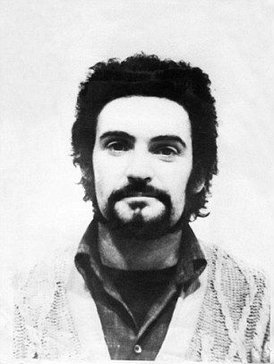On January 2, 1981, Peter Sutcliffe, also known as the Yorkshire Ripper, was arrested by a rookie police officer for having plates that didn’t match his car. This arrest would lead to the end of a murder spree that left 13 dead women in its wake.
Sutcliffe had started his string of murders and assualts in Leeds in 1975, striking a woman with a hammer and stabbing her. He was interrupted by a neighbor and fled before he was able to kill her. He continued his spree for the next 5 years, often but not always finding prostitutes to victimize. He usually started his attacks with a hammer, and then mutilating his victims with a knife or screwdriver. By the end of 1980 his known victims numbered 20, with 13 fatal attacks.
When Sutcliffe was arrested by the rookie cop, he was bought back to be interviewed by detectives. Incredibly, it was his 9th interaction with the police since the spree started. He was listed and interviewed as a suspect several times. Before his interview he was searched. He had a bizarre and suspcious jumpsuit on under his clothing. After several days of interviews, he finally confessed. He had been preparing for another murder when stopped. He was able to ditch a hammer and knife while being arrested. He had also hidden another knife in the police station itself. He was eventually charged and convicted, but a big part of the story was the mismanaged investigation.
Sutcliffe had been interviewed several times, but alibis he gave were not properly run down. During one of his several arrests he was in possession of burglar tools, a hammer it turned out. There was physical evidence that was not properly processed or just missed. In the age before computers, the large amounts of data collected was never properly organized or reviewed. Personnel assignments were mismanaged and leads were ignored or missed. There were three seperate tips on Sutcliffe but there were never crossreferenced or fully investigated.
Chief Inspector of Constabulary Lawrence Byford was directed to conduct an analysis of the investigation. His report led to reforms in British policing to ensure the cascade of errors would not be repeated. His report was publicly released and led to outrage and lawsuits from the families of Sutcliffe’s victims.











